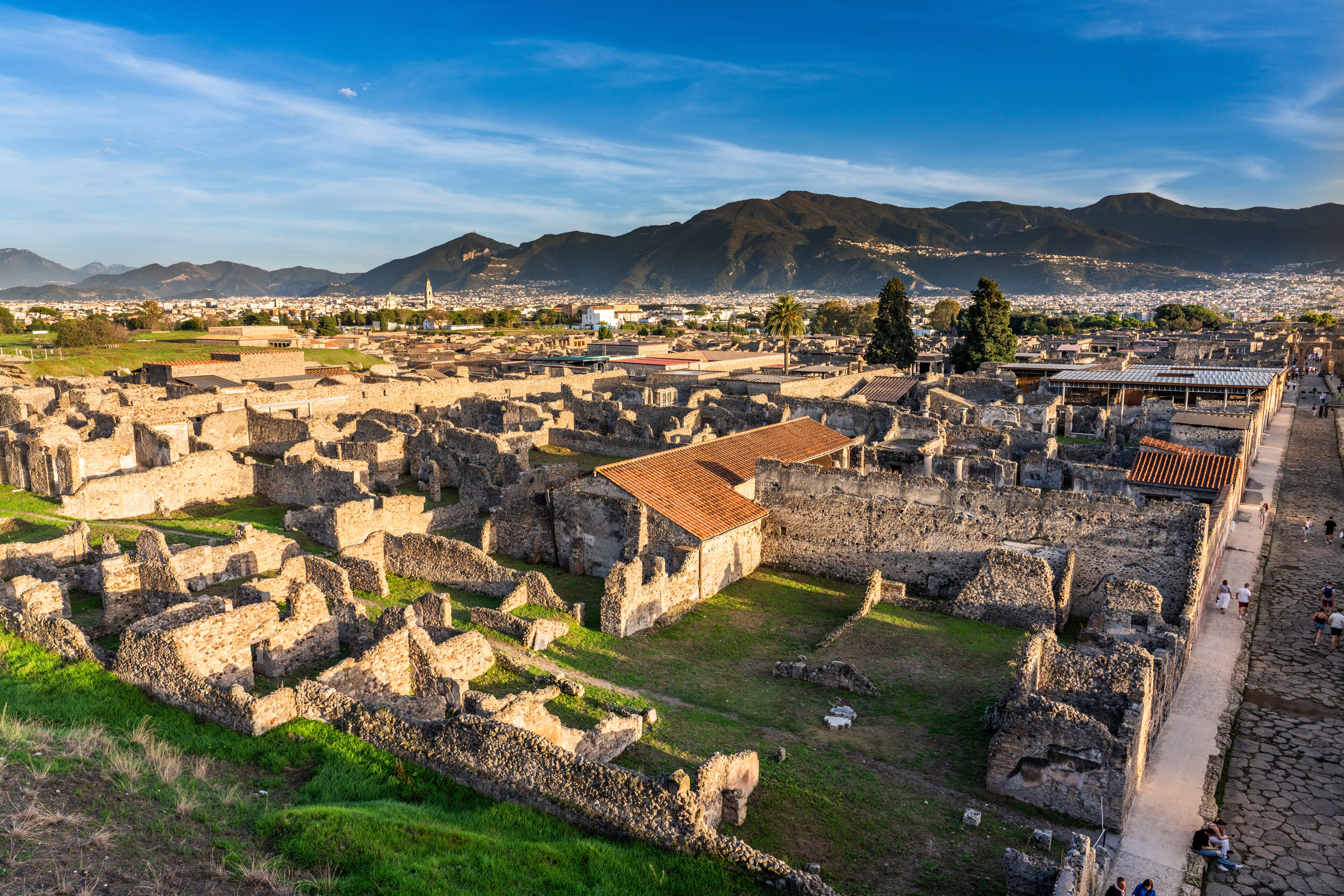Region 1 Pompeii

-
Location and Geography
Region I of Pompeii is situated in the southern part of the ancient city, strategically nestled between regions II and IX. Its proximity to the city walls and the Porta Nocera gate makes it an essential part of Pompeii's layout. The geographical features of Region I are typical of Pompeii, with a mix of residential, commercial, and public spaces. These areas provide a glimpse into the daily lives of its ancient inhabitants.
The streets are paved with cobblestones and lined with building ruins, showing how busy this area once was.
-
Historical Significance
Pompeii is famous for being buried under volcanic ash after Mount Vesuvius erupted in AD 79. Region I is a key part of this history, showing how advanced and lively the Roman Empire was. This area has many different buildings that show the social and economic mix of Pompeii. You can find everything from grand houses of the rich to simple homes and busy shops, showing the complexity and richness of life back then.
Region I is important for its homes, which give us a good look at the building styles and living arrangements of the time. The mix of large villas and smaller homes shows that people from different social classes lived together.
-
Excavation History
The excavation of Region I began in the 18th century and has been ongoing ever since. Many important parts of the area have been uncovered, but some sections are still being excavated or restored. This ongoing work shows how important Pompeii is and the dedication to preserving its history.
Excavations in Region I have found many artifacts, frescoes, and building details. These discoveries help historians and archaeologists understand the daily lives of Pompeii’s residents. However, like the rest of Pompeii, Region I faces challenges in preservation, requiring ongoing efforts to protect and maintain the site.
While much of Region I has been explored, there are still areas left to be fully excavated. The ongoing work continues to reveal new and exciting discoveries.
Highlights of Region I
-
House of the Citharist:
One of the largest houses in Pompeii, the House of the Citharist, spans 2700 square meters and nearly occupies an entire block. This grand home has two atriums and three gardens. The central garden features a swimming pool surrounded by bronze sculptures of animals like a wild boar, dogs, a lion, a deer, and a snake, each with its own fountain.
The house gets its name from a bronze statue of Apollo playing the lyre. The graffiti and electoral inscriptions in the house hint that he belonged to the influential Popidii family. Excavations at the House of the Citharist occurred from 1853 to 1933.
-
Garden of the Fugitives Pompeii:
This area was a vineyard before the eruption. Here, you can see casts of 13 victims, including adults and children, who were trying to escape but were overtaken by the volcanic flow. Their casts are displayed in a glass case at the back of the garden. Excavations of this site took place between 1961 and 1974.
-
Thermopolium of Vetutius Placidus:
This ancient fast-food shop served hot food and drinks. The counter still has large jars embedded in it, and the back wall features a shrine dedicated to household gods and deities like Mercury and Dionysus. The interconnected house has beautiful frescoes and an outdoor dining area. Researchers excavated the House of the Thermopolium from 1928 to 1932.
-
House of Paquius Proculus:
Famous for its detailed mosaic floors, the House of Paquius Proculus dates back to the 2nd century BC. The atrium floor has a mosaic of a chained dog, symbolizing the protection of the house. Inside, you'll find elaborate mosaics with scenes of animals and figures.
The triclinium has a mosaic depicting pygmies fishing, and other artworks are preserved in the National Archaeological Museum of Naples. Excavations of the House of the Paquius were conducted from 1928 to 1932.
-
House of the Menander:
Named after a fresco of the playwright Menander, this house features an atrium with frescoes from the Iliad and Odyssey. The peristyle has a unique rhodium shape, and the house includes a small thermal bath and a basement.
A treasure of 118 silver pieces was found here, now displayed in Naples. The house likely belonged to a relative of Empress Poppea Sabina, Nero's wife. Excavations of the House of the Menander were conducted from 1928 to 1932.
-
House of the Europa Ship
The House of the Europa Ship is renowned for its intricate stucco decorations depicting scenes from the Trojan War. This residence provides a fascinating look at the artistic influences and mythological themes popular in ancient Pompeii.
The House of the Europa Ship was excavated during multiple periods: from 1951 to 1961, in 1972 to 1973, and again in 1975.
Region I of Pompeii is a must-visit for anyone interested in ancient history. The well-preserved buildings and detailed artwork provide a vivid picture of life in this Roman city.